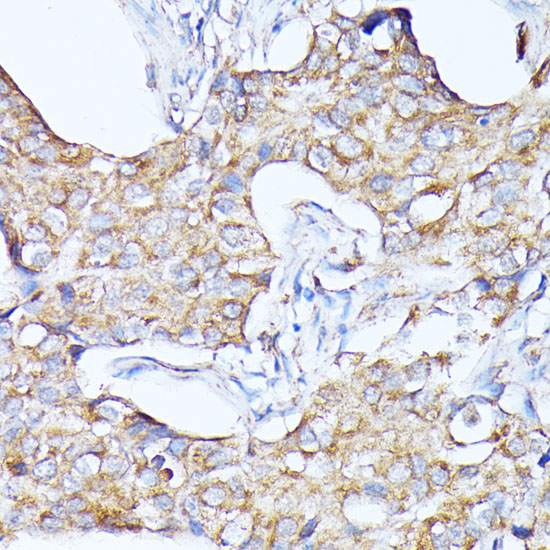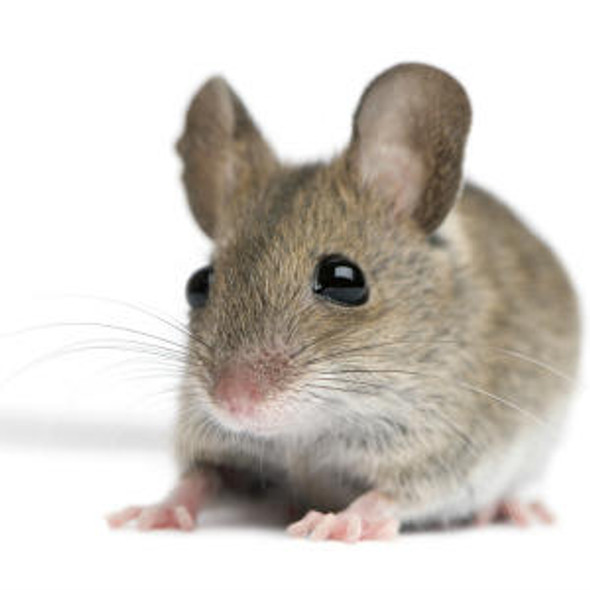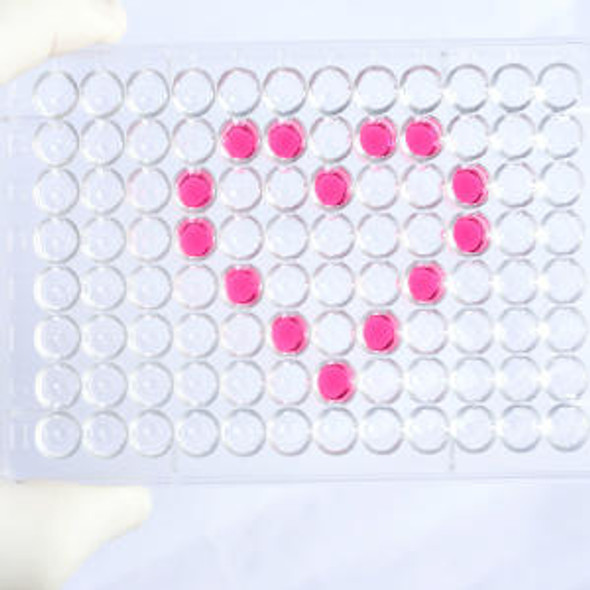Cell Biology Antibodies 1
Anti-CTSF Antibody (CAB10469)
- SKU:
- CAB10469
- Product Type:
- Antibody
- Reactivity:
- Human
- Reactivity:
- Mouse
- Host Species:
- Rabbit
- Isotype:
- IgG
- Antibody Type:
- Polyclonal Antibody
- Research Area:
- Cell Biology
Description
| Antibody Name: | Anti-CTSF Antibody |
| Antibody SKU: | CAB10469 |
| Antibody Size: | 20uL, 50uL, 100uL |
| Application: | WB IHC IF |
| Reactivity: | Human, Mouse |
| Host Species: | Rabbit |
| Immunogen: | Recombinant fusion protein containing a sequence corresponding to amino acids 270-484 of human CTSF (NP_003784.2). |
| Application: | WB IHC IF |
| Recommended Dilution: | WB 1:500 - 1:2000 IHC 1:50 - 1:100 IF 1:50 - 1:100 |
| Reactivity: | Human, Mouse |
| Positive Samples: | U-251MG, SKOV3 |
| Immunogen: | Recombinant fusion protein containing a sequence corresponding to amino acids 270-484 of human CTSF (NP_003784.2). |
| Purification Method: | Affinity purification |
| Storage Buffer: | Store at -20'C. Avoid freeze / thaw cycles. Buffer: PBS with 0.02% sodium azide, 50% glycerol, pH7.3. |
| Isotype: | IgG |
| Sequence: | LAPP EWDW RSKG AVTK VKDQ GMCG SCWA FSVT GNVE GQWF LNQG TLLS LSEQ ELLD CDKM DKAC MGGL PSNA YSAI KNLG GLET EDDY SYQG HMQS CNFS AEKA KVYI NDSV ELSQ NEQK LAAW LAKR GPIS VAIN AFGM QFYR HGIS RPLR PLCS PWLI DHAV LLVG YGNR SDVP FWAI KNSW GTDW GEKG YYYL HRGS GACG VNTM ASSA VVD |
| Gene ID: | 8722 |
| Uniprot: | Q9UBX1 |
| Cellular Location: | Lysosome |
| Calculated MW: | 53kDa |
| Observed MW: | 53kDa |
| Synonyms: | CTSF, CATSF, CLN13 |
| Background: | Cathepsins are papain family cysteine proteinases that represent a major component of the lysosomal proteolytic system. Cathepsins generally contain a signal sequence, followed by a propeptide and then a catalytically active mature region. The very long (251 amino acid residues) proregion of the cathepsin F precursor contains a C-terminal domain similar to the pro-segment of cathepsin L-like enzymes, a 50-residue flexible linker peptide, and an N-terminal domain predicted to adopt a cystatin-like fold. The cathepsin F proregion is unique within the papain family cysteine proteases in that it contains this additional N-terminal segment predicted to share structural similarities with cysteine protease inhibitors of the cystatin superfamily. This cystatin-like domain contains some of the elements known to be important for inhibitory activity. CTSF encodes a predicted protein of 484 amino acids which contains a 19 residue signal peptide. Cathepsin F contains five potential N-glycosylation sites, and it may be targeted to the endosomal/lysosomal compartment via the mannose 6-phosphate receptor pathway. The cathepsin F gene is ubiquitously expressed, and it maps to chromosome 11q13, close to the gene encoding cathepsin W. |
| UniProt Protein Function: | CTSF: Thiol protease which is believed to participate in intracellular degradation and turnover of proteins. Has also been implicated in tumor invasion and metastasis. Belongs to the peptidase C1 family. |
| UniProt Protein Details: | Protein type:EC 3.4.22.41; Protease Chromosomal Location of Human Ortholog: 11q13 Cellular Component: extracellular space; lysosomal lumen; lysosome Molecular Function:cysteine-type endopeptidase activity Biological Process: antigen processing and presentation of exogenous peptide antigen via MHC class II; proteolysis; proteolysis involved in cellular protein catabolic process Disease: Ceroid Lipofuscinosis, Neuronal, 13 |
| NCBI Summary: | Cathepsins are papain family cysteine proteinases that represent a major component of the lysosomal proteolytic system. Cathepsins generally contain a signal sequence, followed by a propeptide and then a catalytically active mature region. The very long (251 amino acid residues) proregion of the cathepsin F precursor contains a C-terminal domain similar to the pro-segment of cathepsin L-like enzymes, a 50-residue flexible linker peptide, and an N-terminal domain predicted to adopt a cystatin-like fold. The cathepsin F proregion is unique within the papain family cysteine proteases in that it contains this additional N-terminal segment predicted to share structural similarities with cysteine protease inhibitors of the cystatin superfamily. This cystatin-like domain contains some of the elements known to be important for inhibitory activity. CTSF encodes a predicted protein of 484 amino acids which contains a 19 residue signal peptide. Cathepsin F contains five potential N-glycosylation sites, and it may be targeted to the endosomal/lysosomal compartment via the mannose 6-phosphate receptor pathway. The cathepsin F gene is ubiquitously expressed, and it maps to chromosome 11q13, close to the gene encoding cathepsin W. [provided by RefSeq, Jul 2008] |
| UniProt Code: | Q9UBX1 |
| NCBI GenInfo Identifier: | 12643325 |
| NCBI Gene ID: | 8722 |
| NCBI Accession: | Q9UBX1.1 |
| UniProt Secondary Accession: | Q9UBX1,O95240, Q9NSU4, Q9UKQ5, B2R964, |
| UniProt Related Accession: | Q9UBX1 |
| Molecular Weight: | 53,366 Da |
| NCBI Full Name: | Cathepsin F |
| NCBI Synonym Full Names: | cathepsin F |
| NCBI Official Symbol: | CTSF |
| NCBI Official Synonym Symbols: | CATSF; CLN13 |
| NCBI Protein Information: | cathepsin F |
| UniProt Protein Name: | Cathepsin F |
| Protein Family: | Cathepsin |
| UniProt Gene Name: | CTSF |
| UniProt Entry Name: | CATF_HUMAN |
View AllClose








